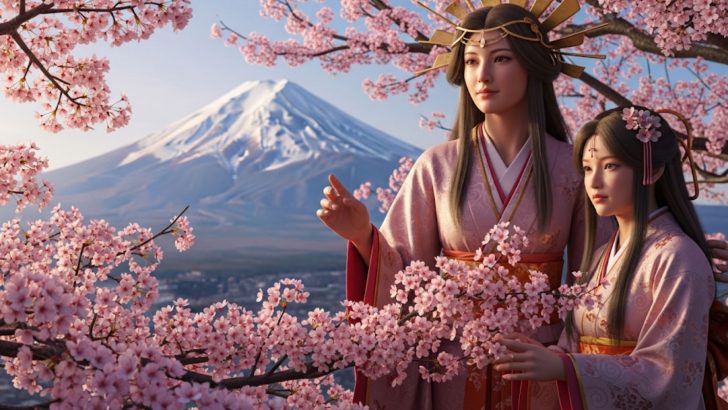Japan’s mythology is filled with fierce, divine, and unforgettable women. Some ruled the heavens, others created the world, and a few had tempers that could shake mountains.
These legendary women weren’t just pretty faces—they were creators, warriors, mothers of gods, and mysterious spirits who left their mark on Japanese culture forever.
Whether they brought sunlight to the world or haunted forests with beauty and danger, each of them had their own unique power.
So grab a matcha tea and settle in—here are seven of the most fascinating and powerful goddesses and mythical women from Japanese folklore.
1. Amaterasu – The Sun Goddess Who Lights Up the World
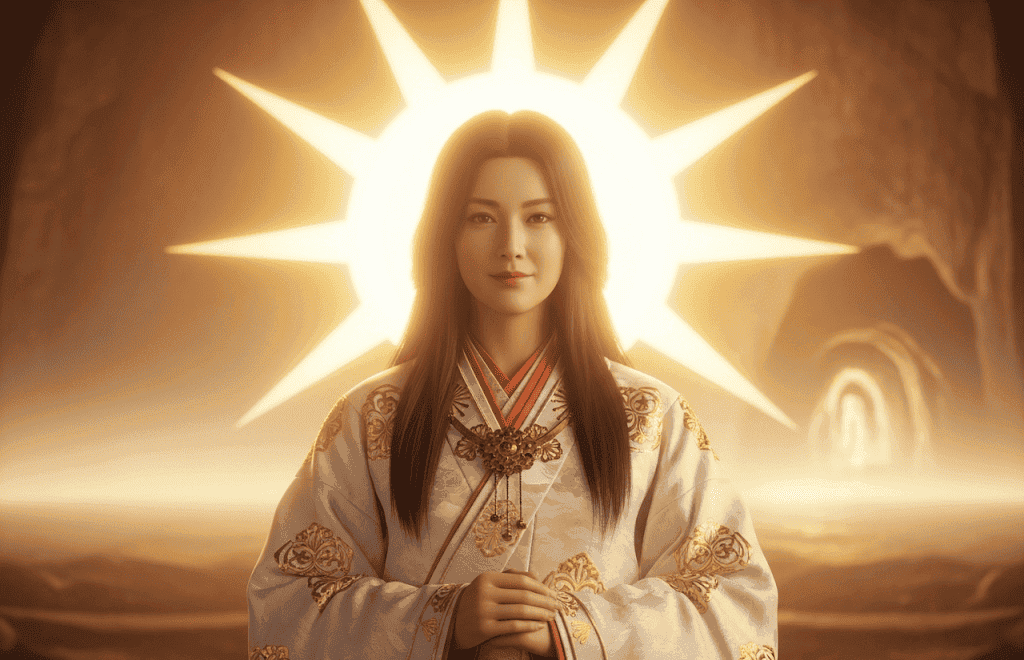
Amaterasu is one of the most important figures in all of Japanese mythology. She’s the Shinto goddess of the sun, and according to myth, she created light itself.
Her name means “Shining in Heaven,” and that’s exactly what she does—literally. She was born from the left eye of Izanagi, the god who shaped the world.
But Amaterasu isn’t just about warmth and light; she’s got a serious attitude, too. One time, after a fight with her brother Susanoo (the storm god), she locked herself in a cave and plunged the world into darkness.
The other gods had to throw a massive divine party just to get her to come out again. Amaterasu is said to be the ancestor of Japan’s emperors, making her divine royalty.
She represents power, dignity, and inner strength—especially when the world tries to dim your shine.
2. Izanami – The Goddess of Creation and Death

Izanami is literally the mother of Japan, no exaggeration. She and her partner Izanagi stirred the ocean with a heavenly spear and created the first islands of Japan.
Talk about a power couple! But Izanami’s story isn’t all sunshine. While giving birth to the fire god, she died and descended into Yomi, the land of the dead.
Izanagi, heartbroken, followed her there to bring her back, but when he saw her decayed form, he freaked out and fled.
Understandably, Izanami was furious. She cursed him and promised to take a thousand lives each day. Still, she’s a fascinating mix of life-giver and death-bringer.
She represents the cycle of birth and decay, creation and destruction. Izanami’s tale reminds us that love, loss, and transformation are all part of the same story—even for the gods.
3. Uzume – The Joyful Goddess Who Danced Away the Darkness
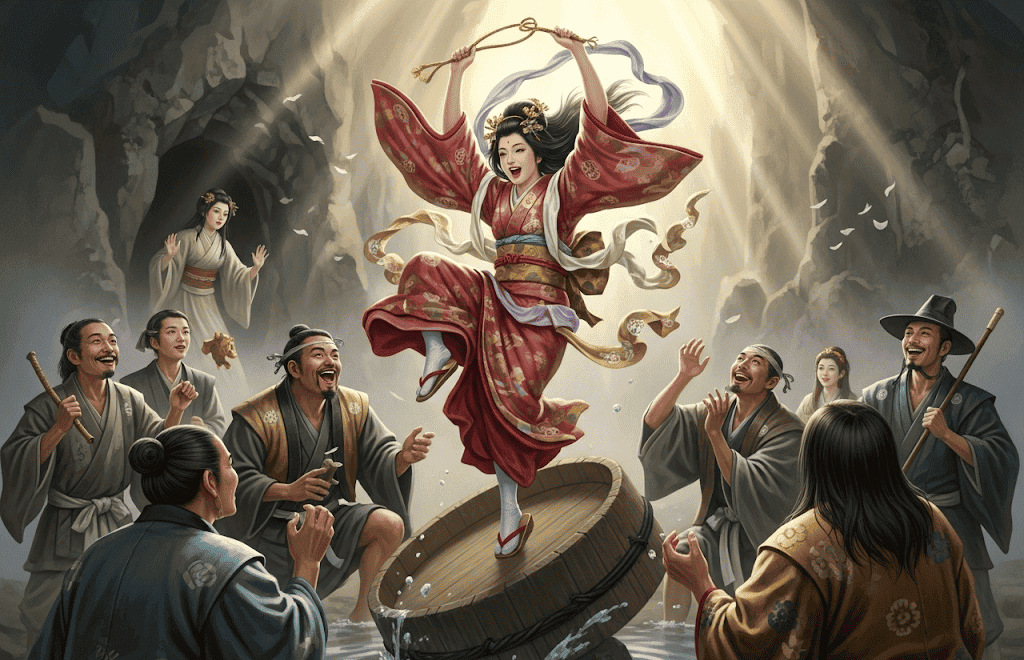
When Amaterasu locked herself in a cave and the world turned dark, it was Uzume who saved the day by getting wild.
Known as the goddess of mirth, dance, and joy, Uzume didn’t try to reason with the sun goddess. She jumped on a tub, stripped, and did a hilarious dance that made all the gods burst out laughing.
The sound of their laughter made Amaterasu curious enough to peek out, and that’s when the gods pulled her out and brought sunlight back.
Uzume isn’t just comic relief; she’s proof that joy is powerful. Her energy, spontaneity, and humor turned despair into hope.
She’s still honored in Shinto rituals and is seen as a protector of performers and artists. So the next time you’re tempted to hold back your light, remember Uzume: sometimes, a little silliness saves the world.
4. Himiko – The Shaman Queen of Ancient Japan
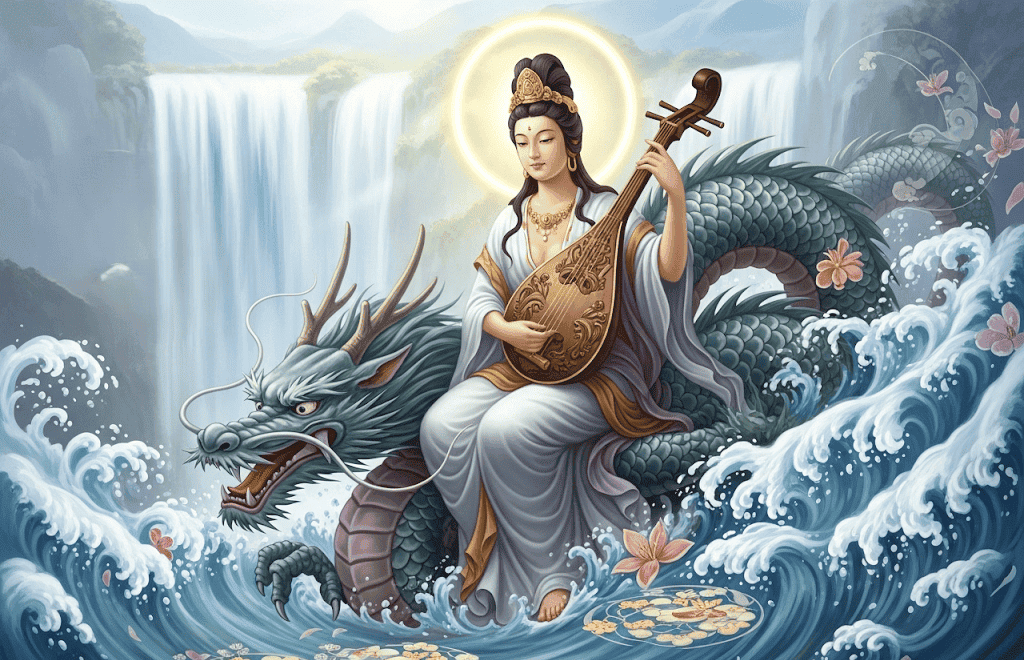
Himiko isn’t a goddess, but her story is so legendary she might as well be. She was a real historical figure.
The ancient Chinese wrote about a powerful queen named Himiko who ruled the land of Wa (early Japan) during the 3rd century.
She never married and rarely appeared in public, but she ruled through magic and mystery. Some say she could speak with spirits and used her shamanic powers to keep peace in her kingdom.
Her people adored her, and foreign rulers respected her. Though historians debate her existence, Himiko has become a symbol of feminine mystique, wisdom, and spiritual leadership.
Her legend lives on in anime, books, and even video games. Himiko shows us that power doesn’t always roar. Sometimes, it whispers from behind a veil.
5. Benzaiten – The Goddess of Everything That Flows
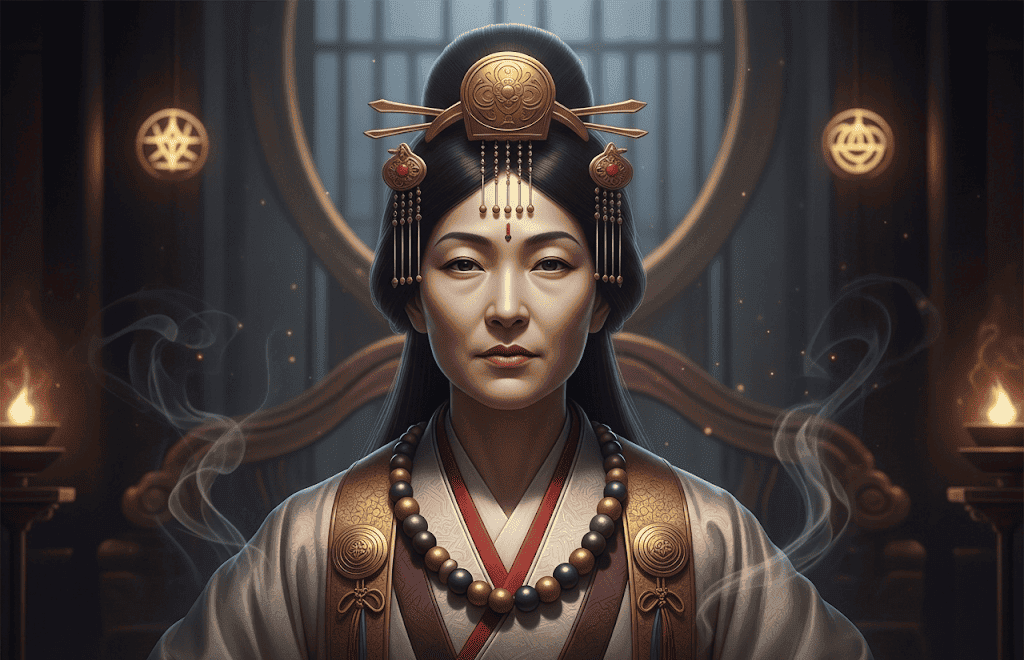
Benzaiten, also called Benten, is the ultimate multitasker. She’s the goddess of music, love, knowledge, art, and water—everything beautiful and inspiring.
Originally from Hindu mythology (as Saraswati), she made her way into Japanese folklore and never left. Benzaiten is often shown with a biwa (a Japanese lute) and rides a dragon, which is extremely cool.
She’s worshipped by artists, musicians, and anyone who wants a creative spark. But don’t be fooled by her graceful look—she’s got edge.
Some stories say she can unleash a fierce, protective side when needed. She also rules over water and snakes, symbolizing constant change and movement.
Benzaiten reminds us that creativity flows best when we let ourselves be fluid and fearless. Whether you’re writing a poem or changing your life, she’s your girl.
6. Yuki-onna – The Beautiful but Deadly Snow Woman

Yuki-onna is one of Japan’s most haunting female spirits. She’s not exactly a goddess, but she’s powerful, unforgettable, and deeply rooted in folklore.
Yuki-onna appears during snowstorms, wearing a white kimono, with long black hair and icy skin. She’s breathtakingly beautiful—but get too close, and you might freeze to death.
Some stories say she helps lost travelers; others say she drains their life force with a single kiss. She’s often silent and mysterious, walking above the snow without leaving footprints.
Yuki-onna embodies winter’s beauty and danger, fragility and power. In some tales, she falls in love with a human and tries to live a normal life until her true nature is revealed.
She’s a complex figure who reminds us that not all beauty is safe, and not all spirits are evil. She’s the chill in the wind, the shimmer in the snow, and the whisper of a warning.
7. Konohanasakuya-hime – The Blossom Princess of Mount Fuji
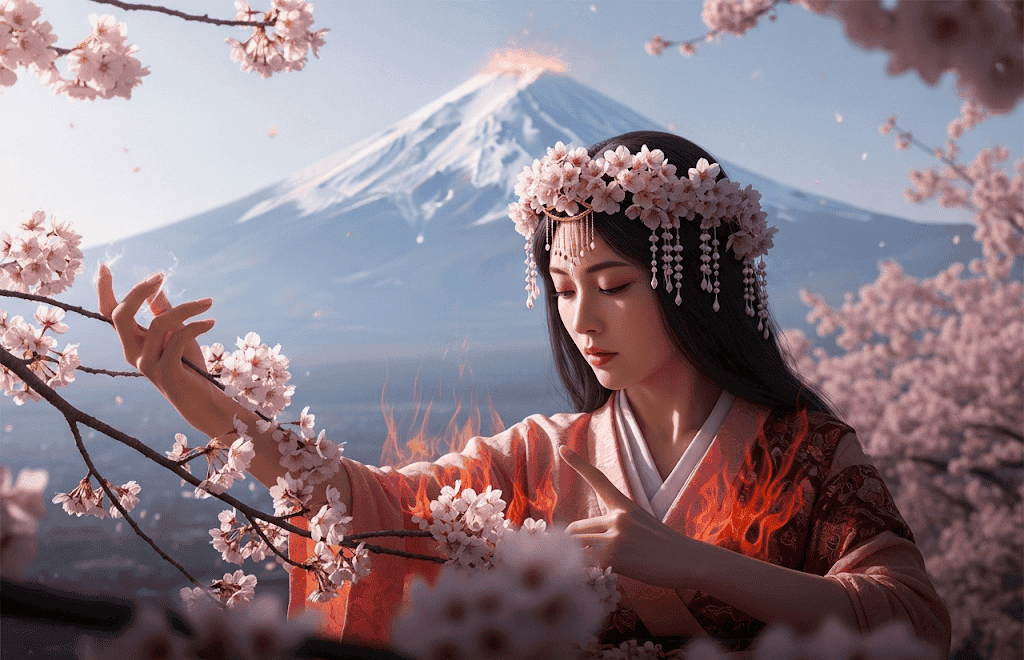
With a name that means “cherry blossom blooming princess,” Konohanasakuya-hime is the goddess of delicate strength.
She rules over volcanoes, flowers, and especially Mount Fuji, one of Japan’s most sacred sites. While cherry blossoms may seem soft and fragile, Konohanasakuya-hime is anything but.
When her husband doubted her faithfulness, she locked herself in a burning hut while pregnant to prove her loyalty and gave birth to healthy children through the flames.
She represents both life’s fleeting beauty and the fierce spirit hidden beneath softness. She’s often seen as a protector of women, childbirth, and nature.
If you’ve ever felt underestimated because of your gentleness, Konohanasakuya-hime is your reminder that flowers can bloom even in fire. Grace doesn’t mean weakness—it means resilience in full bloom.

私は生まれたときから、常に神との強いつながりを感じていた。作家として、また指導者として、私の使命は、人々が最も暗い時代に愛と幸福と内なる強さを見つけるのを助けることである。

